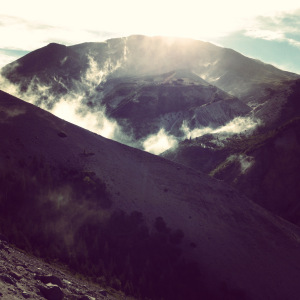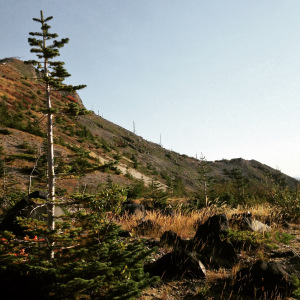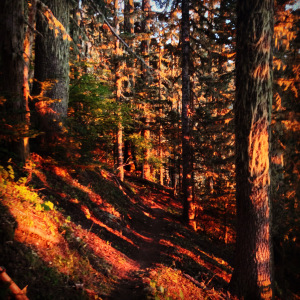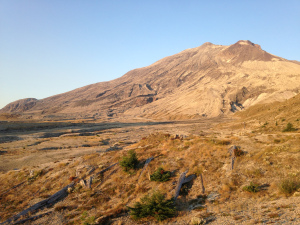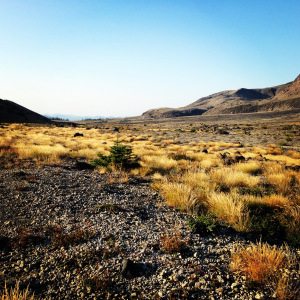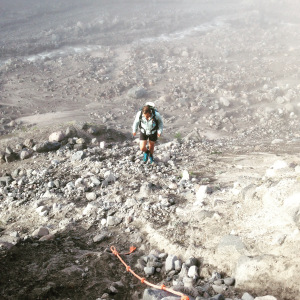11 Reasons You Have to Hike the Mount St Helens Loowit Trail
With a whole entire weekend off and nice weather, why not hike around Mt St Helens?! The Loowit Trail circles Mount St. Helens in 30 miles. Easily powered through in a weekend! It drops into and climbs out of deep gullies eroded by the eruption and debris flows of St. Helens in 1980. The hike is challenging with sparse camps, little water and some sketchy sections of loose pumice. Since the eruption denuded the slopes of the mountain, youre almost always in sun, so getting overheated and sunburned is a very real possibility.
Loowit Trail Fun Facts:
MILEAGE: 28 miles (plus a few depending on which trail you take in)
LOCATION: Around Mount Saint Helens, 50 miles north of Portland OR
WHAT DOES LOOWIT MEAN: “Smoking Mountain” – Native Americans in the region experienced many of St Helens eruptions, thereby deeming the volcano “smoking” or “fire” mountain. “Loowit” likely originates from other Native American names for the mountain – Puyallup tribes called the mountain “Loowitlatkla,” meaning “Lady of Fire,” the Klickitats called the mountain “Louwala-Clough,” and the Cowlitz tribes called it “Lavelatla,” which means “smoking mountain.”
ELEVATION GAIN AND LOSS: 6,000 feet
MOUNT SAINT HELENS: Erupted on May 18, 1980. It was 9,677 feet before and 8,363 feet after the eruption
11 Reasons You Have to Hike the Mount St Helens Loowit Trail
Yes, there are more reasons to hike the Loowit trail besides getting to say the word “Loowit” over and over again – and here they are!
1) No permits!
Unlike it’s cousin to the north – Mount Rainier – St Helens requires no permits! No lotteries. No waiting in lines at Ranger’s Stations. No fees. No sweating whether or not you got selected. Just drive, park, and hike!* Boom, done.
*However, no camping is allowed in the blast zone, so just plan accordingly.
2) Elk
Elk are everywhere, and so are deer! They are awesome. Be sure to keep your distance, especially if you’re night hiking. When we hiked the trail last summer, we were snapping photos of the sunset when we heard rustling below us on the plains. Turns out it was a herd of elk. Startled by our noises and headlamps, one shrieked and another one charged up the hill towards us. We heard an elkish snort very close by. Yikes! We didn’t stick around long enough to know how close it was going to get…
3) Gully adventures
When you’re not traversing plains or worm flows (lava deposits), you’re probably going to be descending into and climbing out of deep gullies. The gullies are evidence of huge water discharges, and likely lahars (debris and mudflows resulting from volcanic eruptions) that extend radially from the flanks of ye olde St Helens.
5) Sunrises and sunsets
When I was there in mid-September, pink, red, and orange permeated the skies mornings and evenings. A sight to behold…
4) Fern Gully
Is a magical land…
Surrounded by barren plains, dry hot earth, and harsh and jagged volcanic rock, you’ll be surprised when you hear the sound of flowing water. Follow your ears down the bank (off trail) just before the June Lake Trail intersection (clockwise). Down a steep and vegetated slope is a stream carrying clear beautiful water. Jackpot. Fill and drink to your hearts content. And stock up while you can as water sources beyond are lacking.
6) The Plains of Abraham
The Plains of Abraham, on the east side, are flattish section of trail unmarked by deep gullies. It is a beautiful respite from toiling gully hiking elsewhere around the mountain.
7) Worm Flows
So, you wonder, “what the hell are worm flows anyway?”. I’m glad you asked!
Worm flows are the rocky, cooled lava flows along streams and creeks.
8) The Toutle
The mother of all gullies. The steepest of the steep. The deepest of the deep. Other hikers will warn you. You may fear the Toutle. A healthy respect is necessary.
9) Lava
More than just worm flows, you can find lava deposits in other spots around the mountain. In the blast zone to the north, there are some sweet lava formations as well.
10) Blasted Trees
Evidence of the explosion, trees were literally flattened by the shock wave that emanated from the mountain in 1980. While it’s not awesome that thousands of trees perished, it is an awesome sight to behold.
11) St Helens
Because hiking around an active volcano is badass and beautiful
This website contains affiliate links, which means The Trek may receive a percentage of any product or service you purchase using the links in the articles or advertisements. The buyer pays the same price as they would otherwise, and your purchase helps to support The Trek's ongoing goal to serve you quality backpacking advice and information. Thanks for your support!
To learn more, please visit the About This Site page.

